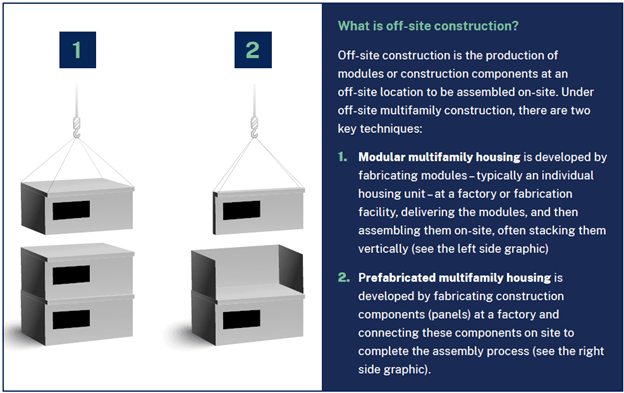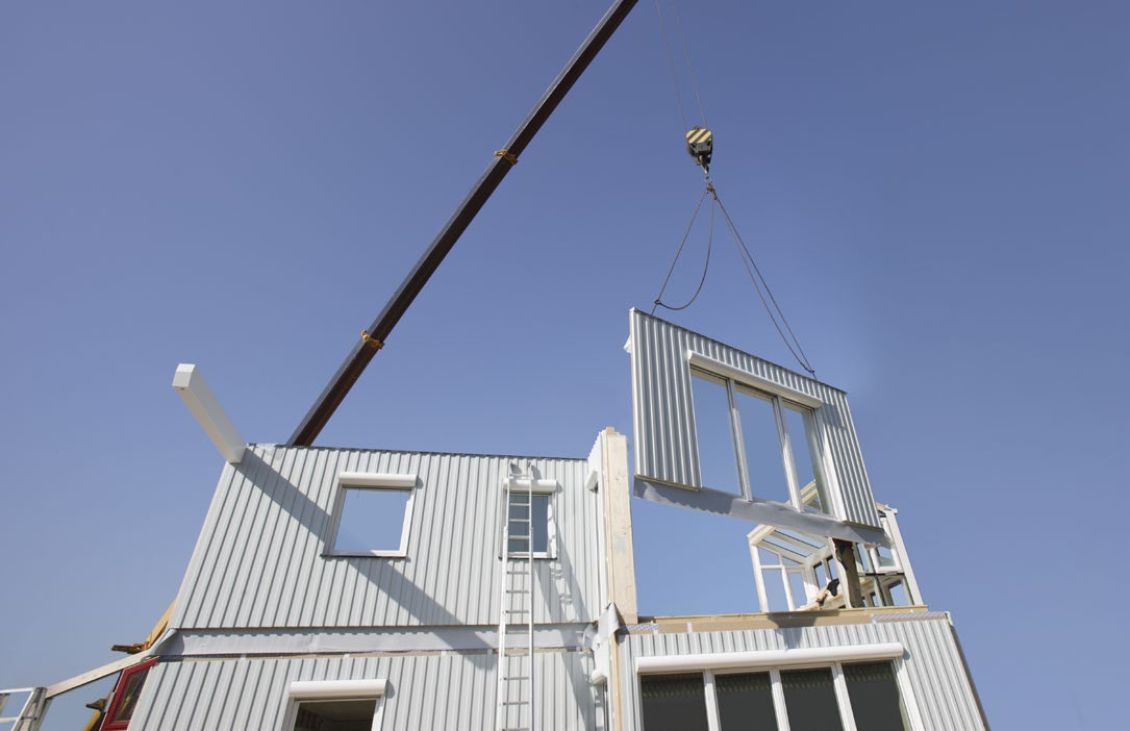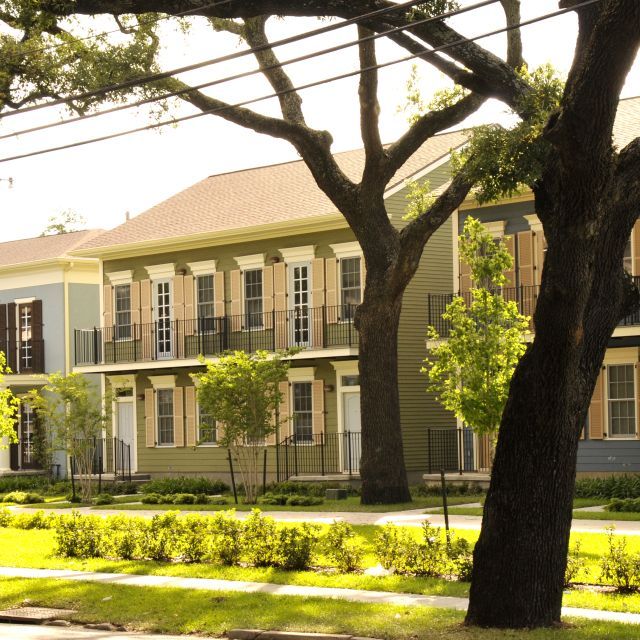As households across the country grapple with the cost of housing, there's a growing movement to find opportunities to build housing faster and more affordably. Off-site construction, which includes both modular and prefabricated housing, has immense potential to cut both the time and money it takes to develop housing by producing building components off-site before installing them on-site. However, this strategy does come with its own challenges: a lack of clear and consistent regulations, a mismatch with existing building codes, and a need for non-traditional financing products.

Since releasing a paper on this strategy in 2019, several jurisdictions and private entities have taken steps to make it easier to build multifamily housing off site. In a new issue brief — Making it Happen: Scaling Off-Site Construction, the second in this series focused on opportunities to scale affordable housing innovations — we focus on regulatory reforms that would make it easier to leverage off-site construction and opportunities to tailor financing products to its unique needs.
To unlock the potential of off-site construction and scale this housing innovation to produce more housing nationwide, we highlight three important opportunities.
1. Establish universal regulations for off-site construction permitting and inspections.
The lack of clear and consistent regulations governing off-site multifamily construction nationwide limits its potential to cut time and costs. Nearly 40 states and the District of Columbia have regulations at the state level, and for remaining states, regulatory responsibilities are shifted to local governments. Given the likelihood that a project’s off-site modules or elements are fabricated in one jurisdiction before it is transported to another for on-site assembly, the inconsistency between regulations results in a cumbersome and time-consuming administrative process.
The International Code Council (ICC) and the Modular Building Institute (MBI) are two organizations leading the way to overcome regulatory challenges to building sustainable and safe housing more effectively. They have co-developed standards that, if adopted, would help jurisdictions streamline and expedite processes from plan review to inspections.
- The ICC/MBI 1200 Standard for Off-Site Construction: Planning, Design, Fabrication and Assembly provides requirements for designers, manufacturers, transporters, and assemblers to quality control and outline clear roles and responsibilities.
- The ICC/MI 1205 Standard for Off-Site Construction: Inspection and Regulatory Compliance provides a framework for permitting and inspections, as well as the use and oversight of third-party entities to conduct inspections, a boon especially for local governments that may be facing capacity issues.
Since 2021, states including Utah and Virginia have adopted these measures, and more jurisdictions should consider enacting these standards to help bring off-site construction to scale.
2. Revise planning codes to allow increased height limits for modular buildings.
When leveraging off-site construction to address housing needs, unit count is a significant part of the equation, but it can be hampered by local regulations. In modular construction, modules are stacked on top of each other, creating thicker layers of building material in between floors. Therefore, a proposed modular development may have the same number of floors as a typical development, but slightly exceed height limitations, requiring developers and architects to lower the number of floors and, accordingly, the number of housing units.
To address this discrepancy, in 2021, the Oakland City Council passed the Construction Innovation and Expanded Housing Options Act, revising the city’s planning code to increase the height limit for modular buildings. This change is a simple way to remove unnecessary caps on housing units and can serve as a model for other jurisdictions.
3. Create financing products tailored to the needs of off-site construction.
The expedited timeline for off-site construction compared to typical site-built construction is one of its strengths. However, it requires a different draw schedule – or the amount of project funds that lenders provide at certain intervals throughout construction. In typical construction, funds are released at specific construction milestones over a consistent schedule with equal periods, but this arrangement does not work for off-site construction, which has substantially more early-stage outlays.

The upfront fabrication phase that occurs at an off-site factory, which can happen at the same time as site preparation and foundation work, is the longest construction phase in off-site construction projects, followed by a shorter on-site assembly phase. This means that fabricators typically require a large deposit upfront, which could be 50% of the total construction cost or more, to purchase raw materials and cover labor and overhead costs. Some lenders may be hesitant to release large amounts of debt upfront before they are able to track any tangible construction progress on the project’s site.
Therefore, financing products tailored to off-site construction should include early-stage capital, such as a revolving loan fund or line of credit designed to cover upfront fabrication costs before developers tap into funds from traditional construction loans. Several private lenders have also explored or launched construction lending products specifically designed for off-site construction. Examples of financing products can be found in the full issue brief.
---------
Because the regulatory and financing efforts discussed are recent and limited in scope, they have yet to translate into a significantly increased supply of off-site multifamily development nationwide. By adopting similar initiatives, additional public and private entities can help the housing industry realize the time and cost efficiencies offered by off-site construction at scale.
Read the full brief, "Making It Happen: Scaling Off-site Construction."
This research was made possible through the generous support of JPMorgan Chase & Co. Unless otherwise specifically stated, the views and opinions expressed in the report are solely those of the report’s author and do not necessarily reflect the views and opinions of JPMorgan Chase & Co. or its affiliates.


